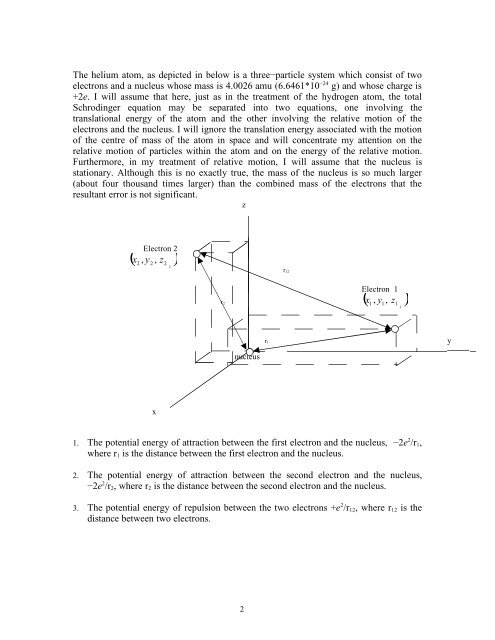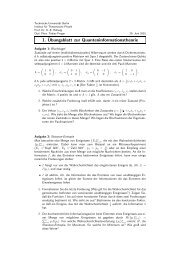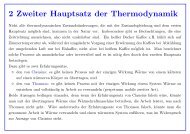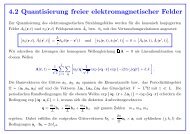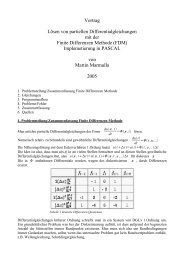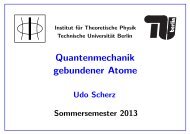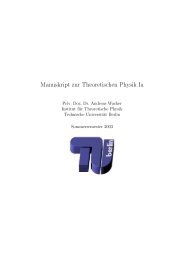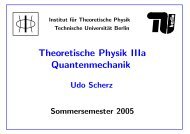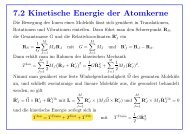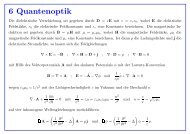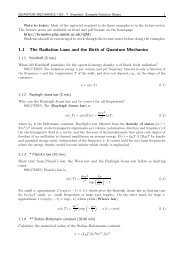INTRODUCTION I have decided to do a project on how to ...
INTRODUCTION I have decided to do a project on how to ...
INTRODUCTION I have decided to do a project on how to ...
- No tags were found...
You also want an ePaper? Increase the reach of your titles
YUMPU automatically turns print PDFs into web optimized ePapers that Google loves.
The helium a<str<strong>on</strong>g>to</str<strong>on</strong>g>m, as depicted in below is a three−particle system which c<strong>on</strong>sist of twoelectr<strong>on</strong>s and a nucleus whose mass is 4.0026 amu (6.6461*10 −24 g) and whose charge is+2e. I will assume that here, just as in the treatment of the hydrogen a<str<strong>on</strong>g>to</str<strong>on</strong>g>m, the <str<strong>on</strong>g>to</str<strong>on</strong>g>talSchrodinger equati<strong>on</strong> may be separated in<str<strong>on</strong>g>to</str<strong>on</strong>g> two equati<strong>on</strong>s, <strong>on</strong>e involving thetranslati<strong>on</strong>al energy of the a<str<strong>on</strong>g>to</str<strong>on</strong>g>m and the other involving the relative moti<strong>on</strong> of theelectr<strong>on</strong>s and the nucleus. I will ignore the translati<strong>on</strong> energy associated with the moti<strong>on</strong>of the centre of mass of the a<str<strong>on</strong>g>to</str<strong>on</strong>g>m in space and will c<strong>on</strong>centrate my attenti<strong>on</strong> <strong>on</strong> therelative moti<strong>on</strong> of particles within the a<str<strong>on</strong>g>to</str<strong>on</strong>g>m and <strong>on</strong> the energy of the relative moti<strong>on</strong>.Furthermore, in my treatment of relative moti<strong>on</strong>, I will assume that the nucleus isstati<strong>on</strong>ary. Although this is no exactly true, the mass of the nucleus is so much larger(about four thousand times larger) than the combined mass of the electr<strong>on</strong>s that theresultant error is not significant.zElectr<strong>on</strong> 2( x2 , y2, z2)1r 2r 12(1 1,1)Electr<strong>on</strong> 1x , y z1r 1ynucleusx1. The potential energy of attracti<strong>on</strong> between the first electr<strong>on</strong> and the nucleus, −2e 2 /r 1 ,where r 1 is the distance between the first electr<strong>on</strong> and the nucleus.2. The potential energy of attracti<strong>on</strong> between the sec<strong>on</strong>d electr<strong>on</strong> and the nucleus,−2e 2 /r 2 , where r 2 is the distance between the sec<strong>on</strong>d electr<strong>on</strong> and the nucleus.3. The potential energy of repulsi<strong>on</strong> between the two electr<strong>on</strong>s +e 2 /r 12 , where r 12 is thedistance between two electr<strong>on</strong>s.2


